The findings, whose age is estimated to be more than 300,000 years old, raise important questions about the characteristics that define the species Homo sapiens and how man was created
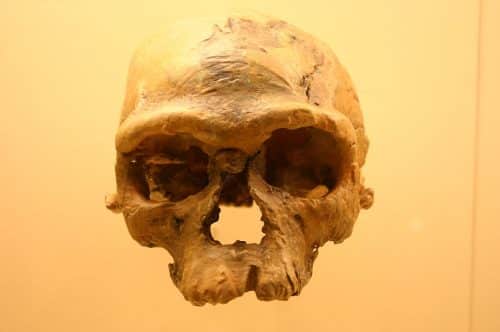
The year is 1961. At the mineral mining site Brit בJebel Ayehud, about a hundred kilometers west of Marrakesh, a human skull was found. In the excavations made following her discovery, the bones of several other people were uncovered, along with the remains of animals and stone tools. At first the fossils were considered the remains of Neanderthals 40,000 years old, later they changed their identification and they were classified as Homo sapiens remains, and finally it was determined that their age is about 160,000 years. But the remains from Jebel Ayehud remained a bit of a mystery because in some ways they looked more primitive than the older Homo sapiens fossils.
However, now new evidence is forcing the researchers to rewrite the story of the remains from Jebel Ayyud. A group of researchers led by Jean-Jacques Hiblanc from the Max Planck Institute for Evolutionary Anthropology in Leipzig, Germany, uncovered more human fossils and stone tools, and with them convincing evidence that the site is much older than the age assigned to it by the revised estimate. Researchers have recently described the Their findings in the journal Nature. If the fossils do belong to Homo sapiens, as the group claims, they show that the origin of our species is 100,000 years earlier than researchers have thought so far, and they undermine the accepted ideas about the places and ways in which our ancient relatives developed. But other scientists have different opinions about the significance of the new findings. Instead of a simple solution to the question of our origin, the discoveries in Jebel Ayyud are added to the pile of other evidence according to which the origin of the human race is a very complicated matter.
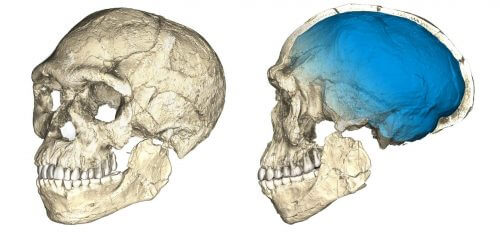
Experts have long agreed that our species, Homo sapiens, originated in Africa. Until now, the oldest findings that are widely agreed to be our species are 195,000-year-old remains from Ether Omo Kibish, and fossils 160,000 years old fromHerto, two sites located in Ethiopia. But DNA evidence and some enigmatic fossils hinted that our species may have even deeper roots.
In the work they conducted recently, Hiblan and his colleagues uncovered fossils of several additional details in a part of the Jebel Ayyud site that the miners did not damage. The findings include a skull and lower jaw bones, as well as stone tools and the remains of animals that these humans hunted. Different dating techniques state that the age of the rock layer containing the fossils and the objects by them is between 350,000 and 280,000 years.
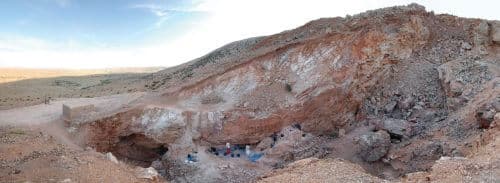
The researchers found that the facial bones, lower jaws and teeth from Jebel Ehud correspond to Homo sapiens, not Neanderthals or other ancient human types. But the cranial cavity of these skeletons is elongated, as in ancient human types, and not rounded like that of modern man. Such differences are related to differences in brain organization. The group concluded that the remains from Jebel Ayehud represent "the earliest roots of our species, the earliest Homo sapiens ever found in or outside of Africa," as Hiblan said at a press conference. He and his colleagues explained in a paper describing the fossils that the remains belonged to a human group that did not have some distinct features of modern humans, but whose anatomical form could have gradually evolved into the modern form.
Hiblan pointed out that these findings do not mean that Morocco was the cradle of modern humanity. Together with other fossils that have been discovered, they indicate that Homo sapiens lived all over Africa. 300,000 years ago, early Homo sapiens had already reached all parts of the continent. At that time, Africa was a very different place than it is today: the Sahara region was not the arid desert barrier that it is today but a green area, and these conditions helped the species to spread.
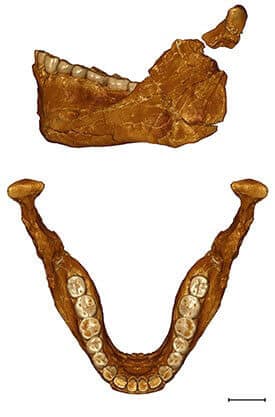
But not all scientists accept the claim that the fossils from Jebel Ayehud belong to Homo sapiens. The paleo-anthropologist John Hawkes from the University of Wisconsin at Madison commented that Hiblan and his colleagues did not compare the remains they found at Jebel Ayehud with 800,000-year-old fossils found in Spain of a species called Homo Ontessor: “Perhaps [from the man of] Jebel Ayyud evolved modern humans, but another possibility is that he preserves a facial shape similar to that of the Homo antessur population, which may have been the last common ancestor of the Neanderthals and later African proto-humans. "
The new fossils "raise serious questions about the traits that define our species," says the paleoanthropologistMarta Mirzon Lar from the University of Cambridge. "Is a fossil Homo sapiens because of the spherical skull, which implies a new organization of the brain? If so, the population from Ayyud [is of] our close cousins," but not of our kind. On the other hand, if small faces and the shape of the lower jaw are the main features, then the remains from Jebel Ayyud could indeed be of who our ancestors really were, diverting the attention of scientists studying the origin of modern humans from sub-Saharan Africa to the Mediterranean basin, says Mirzon Lar.
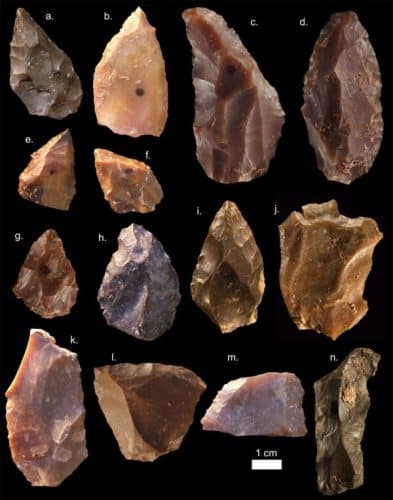
Either way, the discoveries could spark a lively debate on the question of who invented the tools of the Middle Stone Age in Africa - a cultural period that began about 300,000 years ago and lasted until about 40,000 years ago. If Homo sapiens existed 300,000 years ago it could be one of the candidates. But other human species also existed in the area at that time, among them Homo heidelbergensis וNaldi gay.
The findings from Jebel Ayyud "give the picture a beautiful complexity," says the archaeologist Christian Tryon from Harvard University. But the added complication means that scientists tracing the origins of our species will now have a lot of work to do. Sometimes the most familiar things are also the most mysterious.
About the writers
Kate Wong - Senior Editor on Evolution and Ecology at Scientific American.
See more on the subject on the science website:
